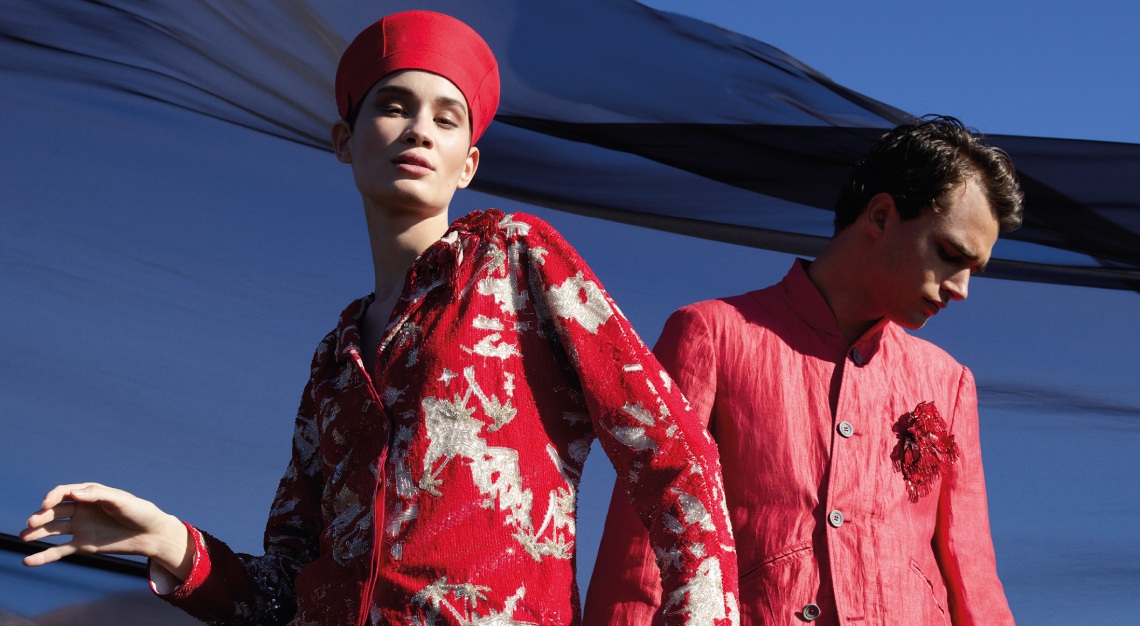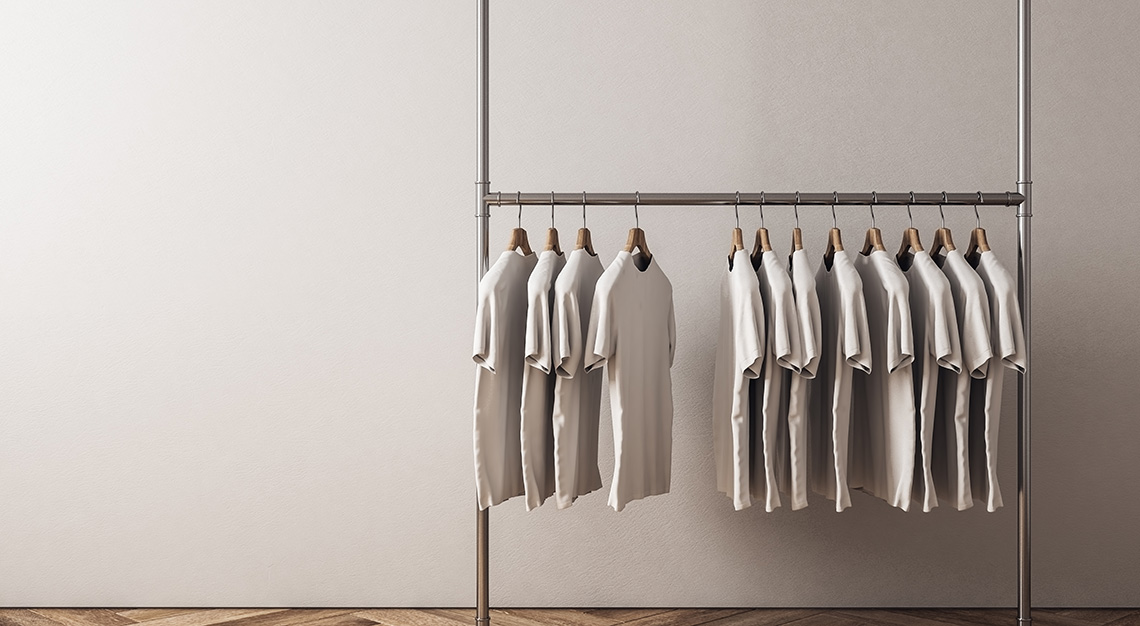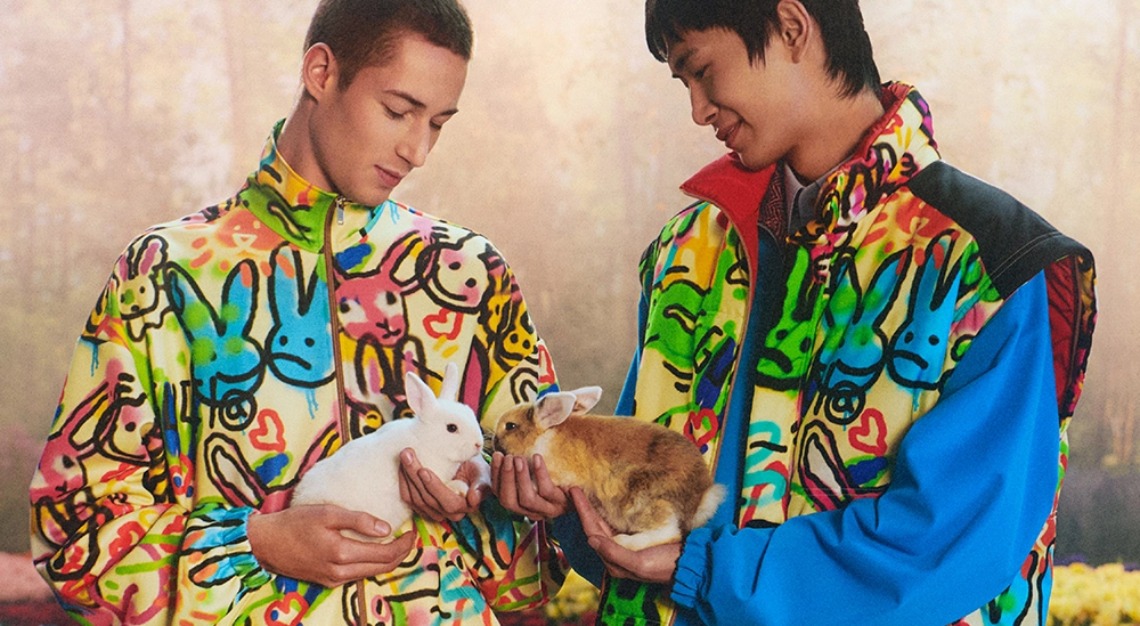With a week of events in Shanghai and his latest collection in Milan, Alessandro Sartori makes the case for a more meaningful mindset
Tumbling yuan be damned. While recently in Shanghai at the invitation of Italian luxury brand Zegna—in the city to promote its spring ‘24 collection, further evangelise the company’s high-minded sustainability goals to top-spending customers, and inaugurate a new Zegna cafe—I witnessed consumerism at its finest. On one particular afternoon, in the hour it took me and three other editors to finish our three-course lunch at Le Comptoir de Pierre Gagnaire in the city’s chic Xuhui district, brand ambassadors Mads Mikkelsen and Leo Wu managed to move nearly US$10 million worth of Zegna merchandise, all via WeChat livestream (picture a quicker, more off-the-cuff QVC, with much bigger celebrities). The inescapable super-app, all the rage in this country of 1.4 billion, can sell items despite showing them for as little as three seconds; it makes TikTok Shop look like Zappos and provides an ideal connection to Zegna’s increasingly younger consumers. But there’s more to the story than just eye-popping numbers.
Beyond the countless purchases of elasticised Triple Stitch sneakers—a US$1,000-plus gateway buy, prominently featured on Succession, with an average customer age of around 33 years old—Chinese consumers are just now embracing sustainability in the luxury sector, according to Zegna artistic director Alessandro Sartori. “This was not at all the case four years ago,” he notes, “but everything has changed.” The designer and his team are in Shanghai for what they’ve dubbed Villa Zegna, a weeklong immersive experience celebrating the brand’s values and the linen-centric SS24 Oasi Lino collection. Zegna has long had a presence in China: It was the first luxury brand to open a boutique in mainland China, in 1991, when it was still officially known as Ermenegildo Zegna. (The founder’s first name was dropped in 2021, to make it more digestible and to better align with the stock ticker symbol “ZGN.”)

“Not so long ago, China was all about huge logos and bold statements,” says Sartori, who, given the blistering sun atop the roof of the Middle House hotel, has swapped his usual uniform of black for an all-white ensemble. But, he says, “On the flight to Hong Kong, I looked around at the passengers in anonymous monochrome garments, technical shoes with suits, and thought I must be headed to New York or London.” (No doubt related is the fact that the Chinese government is now cracking down on wealth-flaunting influencers.)
As if on cue, Mikkelsen strolls by in a head-to-toe Oasi Lino look, cutting the same cool figure in a spectrum of neutrals as he does in the ads plastering the surrounds of a Zegna boutique in the adjacent shopping mall, one of 81 stores in the greater China region. It’s difficult to imagine breaking a sweat in these clothes, particularly when you needn’t even be bothered to tie your shoes: The actor is sporting the latest riff on the Triple Stitch, a welcome summer update in the form of a buttery suede espadrille.

Though its reach and influences are undeniably global, Sartori’s vision, and its connection to that of Zegna’s founder, is rooted in the Biellese Alps—specifically, a 100-square-kilometre reforestation project and nature preserve known as Oasi Zegna. The aptly named Sartori was born in Trivero, a stone’s throw from Zegna HQ, to a seamstress mother who had an immeasurable influence on his future vocation. He first joined the brand in 1989, and, despite a stint at Berluti (to which his command of colour was well suited), he found his way back home in 2016.
The debut Oasi Lino collection, now available in Zegna stores worldwide, was first presented for SS24 in Milan’s Piazza San Fedele, the setting transformed by 192 bales of raw flax which eventually made their way into the garments. A seasonally appropriate choice, yes, but also a new challenge for a brand known for testing the limits of what can be done with wool. (For example in 2018, with the introduction of high-performance Technomerino and a wash-and-go suit.) The collection also reinforced the more relaxed silhouette that Sartori has introduced—don’t expect a reinvention each season inspired by a new, exotic locale—and marked a major stride for the brand: 100 per cent traceability, from seed to garment, with full journey details accessible via QR code hang tags.

“Fabric innovation is our foundation,” says Sartori, whose team meets weekly to discuss the latest technologies and determine which textiles are required for which garments, whether it’s thin shirting or a heavier twill suited to outerwear. Having five state-of-the-art mills at their disposal helps.
Shanghai’s French influence is pervasive in everything from the architecture to the precisely planted allées of trees, but Italianness feels particularly strong this week. The Zegna team managed to transform a concrete shell of a space into a “field” of painstakingly placed dried flax plants, through which a sinuous dining table snaked its way. The full immersion continued over a dinner of ravioli and Piedmontese wines, a taste of things to come from the new Zegna Caffe, a sleek, travertine-and-walnut-clad space designed by starchitect Patricia Urquiola, which will offer everything from simple panini to the sumptuous veal dish vitello tonnato.

But the focus, relentlessly, is on the Oasi, which Ermenegildo Zegna had the foresight to preserve and which today remains the brand’s touchstone. During his lifetime, the enterprising founder planted 500,000 trees, sowing the seed for the sustainable ethos that guides all things Zegna. While the invite-only festivities saw many of the brand’s top customers in attendance, traveling from near and far, Sartori avoided any Shanghai-exclusive items: Creating one-off, location-specific garments is at odds with his eco-conscious initiatives. There was, however, little mention of our collective carbon footprint. If you, too, find somewhat perplexing the notion of a brand flying in editors and influencers, some from great distances, to trumpet its sustainability credentials, Zegna committed to planting a tree for each guest who traveled to Shanghai for the occasion.
At Zegna’s recent SS25 men’s show in Milan, the celebration of the fiber continued with—what else?—Oasi Lino. A welcomely diverse cast of models (Mikkelsen brought up the rear) took a perfectly coordinated, circuitous route through stalks of copper “flax,” giving guests plenty of time to admire the latest wares. Eschewing the usual seasonal tropes of breezy resort fare, Sartori largely stuck to sculptural suiting in heavier-weight linen with hidden plackets for a streamlined look, while continuing the brand’s material-innovation theme by introducing a linen that has gone through a sanding treatment that renders it largely wrinkle-resistant. If the initial fanfare is any indication—Sartori stuck around post-show to rapturous applause—those in search of thoroughly modern menswear may have found their oasis. To be sure, these weighty, at times rough garments don’t necessarily have the irresistibly soft hand or lightness that’s the calling card of many Italian luxury brands. Indeed, it’s possible this is a case of overengineering, with form trumping function, albeit one that a more adventurous—and likely younger—luxury customer might be eager to embrace.

“Luxury leisurewear” is Sartori’s preferred terminology, heavy on elevated workwear and a monochrome palette that allows for effortless coordination. “Classic, not costume—style, not fashion,” insists Sartori, who does not look to impose too strong a vision on the wearer. It’s the same reason you won’t see the designer dressing anyone for the Met Gala red carpet anytime soon: ”Our customers can be 28 or 60. They are doers, people that work and think seriously but also love to dress well for what they do,” he says. “They love quality and durability and give value to what they buy, but they are not fashionable.”
This story was first published on Robb Report USA






